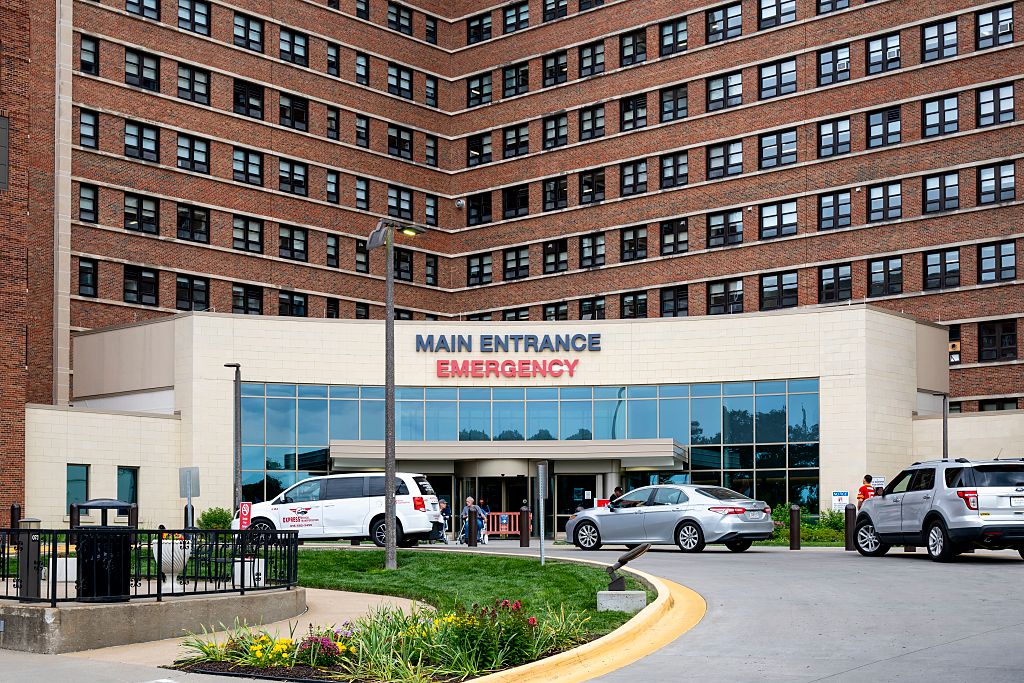**Is Oregon Fudging the Numbers on Child Sex Change Procedures?**
Oregon is at the center of a public records battle that could significantly impact how the public discusses child gender affirmation and gains insight into the actual number of child sex change procedures taking place.
A Portland health advocate, Paul Terdal, who has previously filed for large sets of health insurance claims data, recently encountered pushback when he sought information specifically related to gender-affirming care. According to Terdal, the state pulled back on releasing the requested data after learning the purpose of his study, hinting at possible political motives behind withholding the information.
—
### Background: What Is the APAC Program?
Oregon’s All Payer All Claims Reporting Program (APAC) collects comprehensive medical, dental, and pharmacy claims from insurers and other payers. The program’s goal is to provide researchers and officials with transparent data on the healthcare people receive and the associated costs.
Oregon describes APAC as a transparency tool and offers a process for requesting specific datasets.
—
### The Dispute Over Gender-Affirming Care Data
Paul Terdal, a consumer health advocate and visiting fellow at the group Do No Harm, detailed his ordeal in an op-ed for RealClearPolitics.
He explained that initially, the Oregon Health Authority (OHA) approved his request for ten years of data (from 2001 to 2020). However, once he clarified that his research would focus on gender-affirming care, OHA reversed its decision, refusing to release the records.
Terdal stated:
> “The Oregon Health Authority makes this data available for purchase, and a few years ago, I purchased access to the 2019 data for a federally funded study. I found that while Oregon had estimated that only about 175 patients would obtain taxpayer-funded gender transition services at a total annual cost of no more than $200,000, more than 7,585 patients had done so at more than 100 times the initial cost estimate.”
He further detailed the data:
– 160 children were prescribed puberty blockers.
– Approximately 370 children were taking cross-sex hormones.
– 33 biological girls, some as young as 15, underwent mastectomies.
– Two 17-year-old girls had their uterus and ovaries removed.
This, Terdal says, contradicts a February legal filing by the Oregon Department of Justice claiming, “genital surgery is not performed on transgender minors.” According to him, the data confirm that some children do undergo genital surgery, resulting in permanent sterilization.
—
### Attempts to Obtain Data
In February, after publicizing his findings, Terdal contacted OHA to request access to a new dataset for a research project. Initially, OHA offered him data covering 2001 through 2020, which could have provided invaluable insights into trends in gender dysphoria diagnoses, patient ages, treatments received, and related medical conditions.
However, once OHA realized his project focused on gender-affirming care, his request was flagged due to “political risks,” according to Terdal.
The agency then proposed several restrictive options:
– A contract preventing Terdal from publishing detailed results.
– The potential purging of all records related to gender dysphoria (which OHA later admitted it lacked authority to do).
– Claiming that the database was out of compliance with federal privacy laws—a claim Terdal disputes, noting the data has been sold for 15 years without issue.
—
### Oregon’s Medical Consent Laws for Minors
Oregon allows minors aged 15 and older to consent to their own medical care without parental permission, including gender-affirming treatments. The Oregon Department of Justice clarified that the 2023 law HB 2002 did not change this age requirement.
—
### National Context and Trends
A 2023 JAMA Network Open analysis highlighted that between 2016 and 2020, approximately 48,000 gender-affirming procedures were performed nationwide, peaking around 13,000 cases in 2019.
The majority of these procedures were chest-related surgeries among both adults and minors:
– 59.7% of gender-affirming surgeries in adults (1,591 of 2,664) were chest-related.
– 96.4% of such surgeries in minors (82 of 85) were chest-related.
Additional findings included that 80% of breast reductions among cisgender male adults were performed on cisgender males, and 97% of such procedures among minors were on cisgender males.
Diagnosis rates of gender dysphoria are higher than treatment rates, fueling ongoing political debate. A Reuters analysis estimated that at least 121,882 American children aged 6 to 17 were diagnosed with gender dysphoria from 2017 to 2021. It’s important to note that diagnosis does not necessarily translate to medical treatment.
—
### Changing Policies and Political Climate
Policy responses have varied widely by state, with 2025 marking a notable shift.
– On June 18, 2025, the U.S. Supreme Court upheld Tennessee’s law restricting puberty blockers and hormones for minors, potentially setting precedent for similar bans.
– By July 2025, the Human Rights Campaign reported that 27 states had enacted bans on gender-affirming care for minors.
– Likewise, Kaiser Permanente announced a nationwide pause on gender-affirming surgeries for patients under 19, effective July 2025.
Despite these developments, Oregon law mandates that private insurers must still ensure access to necessary medical care. If a hospital declines to perform a procedure, insurers are obligated to assist patients in obtaining care elsewhere.
—
### Final Thoughts: Trust and Transparency
Paul Terdal expressed deep frustration over Oregon’s handling of the situation:
> “I’m appalled to see this kind of authoritarian behavior from my own Democrat-led state government. My fellow liberals wouldn’t tolerate this from a Republican administration, and I refuse to tolerate it from my own.”
At its core, this conflict revolves around balancing patient privacy with public transparency. Oregon asserts that protecting patient privacy is paramount, while Terdal argues that the public deserves clear, hard data.
If Terdal’s federal complaint results in a court ruling, its outcome could shape how Oregonians—and potentially other states—discuss and approach youth gender care in the future. The questions remain: Will these conversations be grounded in clear, shared facts, or clouded by incomplete data and scattered snapshots that leave vital questions unanswered?
—
**Tags:** Oregon, Gender-Affirming Care, Child Healthcare, Public Records, Gender Dysphoria, Health Data, APAC Program, Medical Privacy, Youth Gender Care
https://www.libertynation.com/is-oregon-fudging-the-numbers-on-child-sex-change-procedures/



